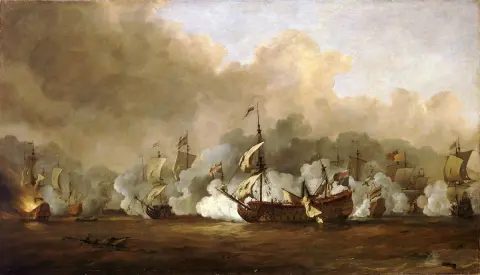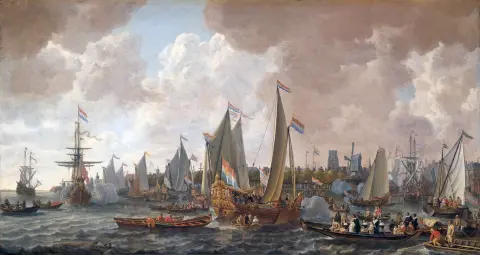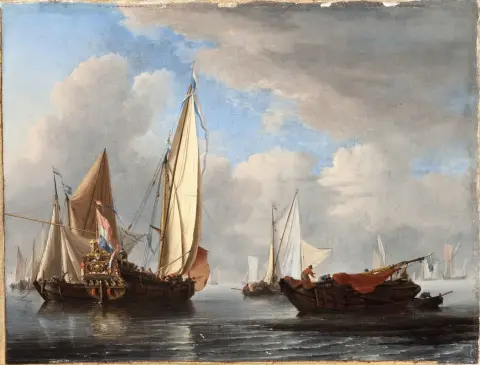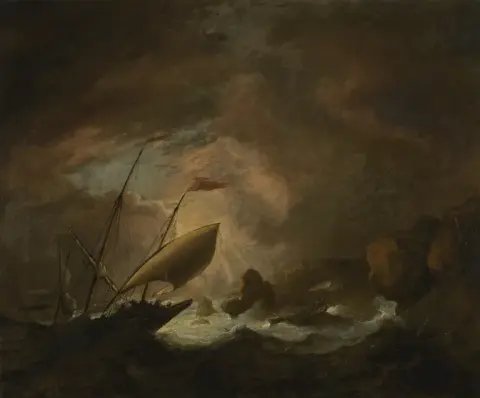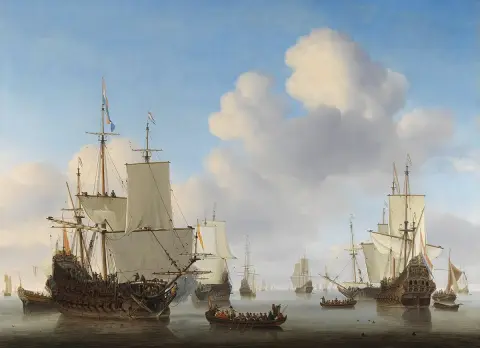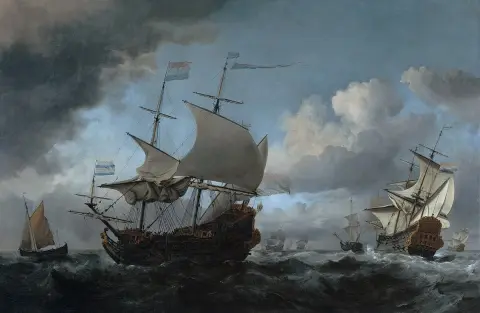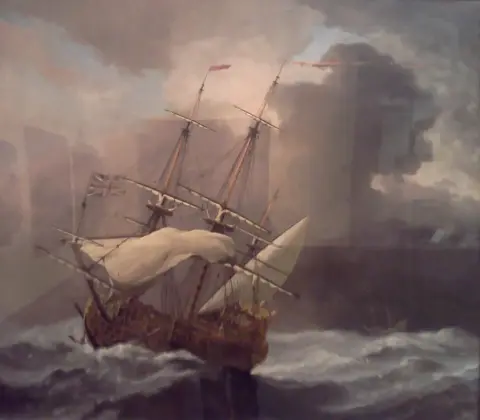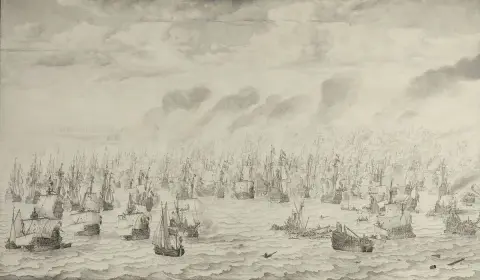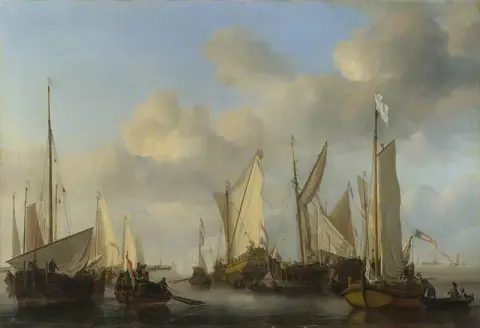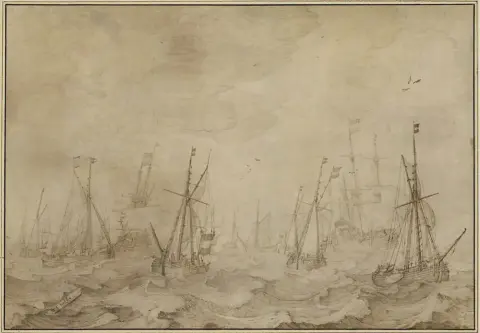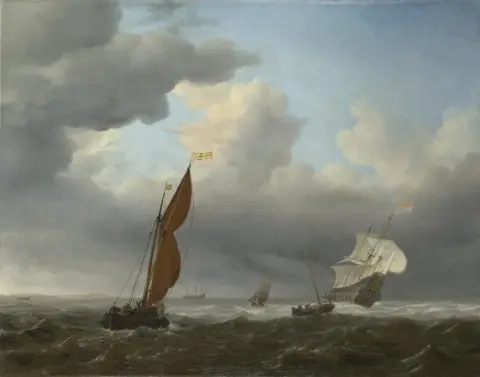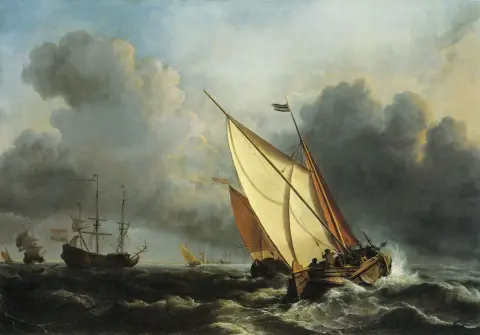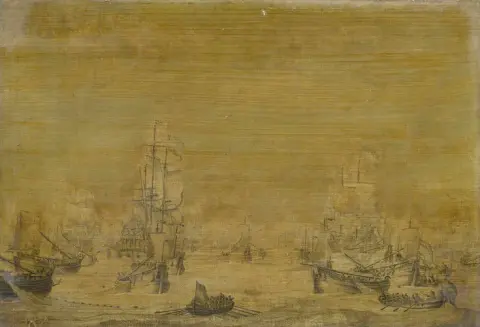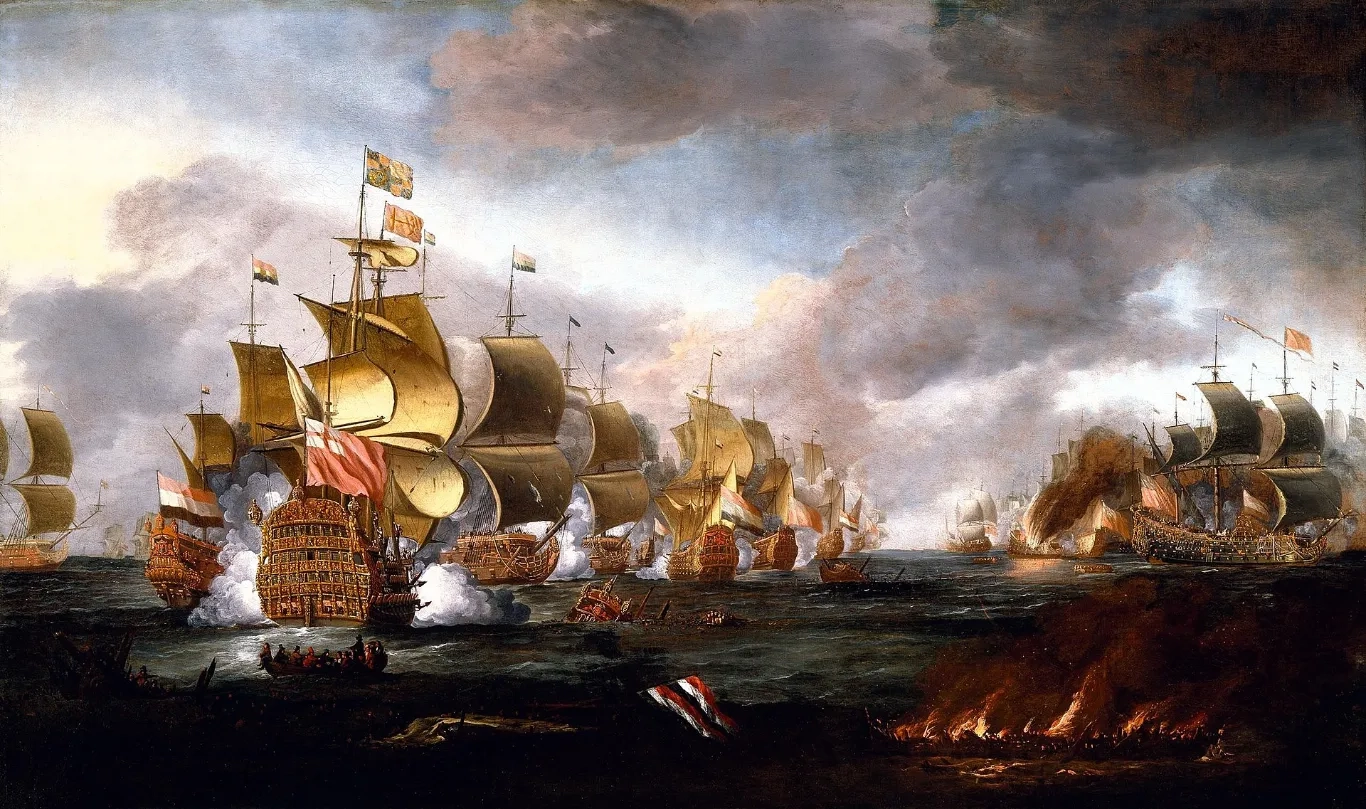

Hand painted reproductions of Willem van de Velde the Elder
Willem van de Velde the Elder: A Renowned Dutch Marine Painter of the 17th Century
Early Life and Education
Willem van de Velde the Elder (1611–1693) was a celebrated Dutch marine painter, known for his precise and dramatic depictions of naval battles, ships, and seascapes. Born in Leiden, Netherlands, in 1611, he was the son of a renowned tapestry designer, which likely influenced his early exposure to the world of art. Though much of his early life remains unrecorded, it is believed that Willem van de Velde the Elder was trained as a painter in his native city.
In his youth, van de Velde moved to Amsterdam, where he became involved in the bustling artistic scene of the Dutch Golden Age. It was here that he began to refine his skill in marine painting, learning from the works of earlier artists and developing his own unique style. His rise to prominence as a marine artist coincided with the Golden Age of Dutch art, a period that saw a boom in the production of genre paintings, landscapes, and seascapes.
Artistic Style and Development
Willem van de Velde the Elder was one of the leading pioneers of marine painting, a genre that flourished during the 17th century due to the maritime power of the Dutch Republic. His works are characterized by their striking realism, precise attention to detail, and dramatic depictions of ships at sea. Van de Velde’s unique ability to capture the majesty and power of naval vessels helped him gain recognition as a master of marine art.
Van de Velde’s paintings often featured scenes of naval battles, shipwrecks, and large fleets of ships, often set against turbulent seas. His compositions were detailed and dynamic, showcasing his expertise in rendering the movement of water, the play of light on the surface of the ocean, and the intricate rigging and sails of the ships. He was particularly adept at portraying the reflection of ships in water, which added depth and realism to his compositions.
Though van de Velde was a master of dramatic scenes, he was also known for quieter, more serene depictions of ships anchored in calm waters. His work was characterized by a careful balance of realism and composition, where every aspect of the scene, from the sky to the water to the ships, was carefully constructed to create a harmonious whole.
Themes and Significance
The most significant aspect of van de Velde’s work was his dedication to portraying the Dutch maritime world with great precision. His marine paintings captured the essence of naval power during the Golden Age of the Dutch Republic, when the Dutch navy was one of the most formidable forces in the world.
His works often depicted the might of the Dutch navy, portraying large fleets in naval battles or peaceful encounters between ships. Through his art, van de Velde highlighted the role of ships as both symbols of national pride and instruments of Dutch commercial and military strength. His depiction of maritime scenes was an artistic response to the geopolitical climate of his time, reflecting the importance of naval power in the Dutch Republic's dominance on the seas.
Another key theme in his work was the beauty of the sea itself. Whether depicting storms or calm waters, van de Velde’s portrayal of the sea was one of immense respect and admiration. His ability to capture the ever-changing qualities of the ocean, its colors, reflections, and movement, made his work stand out in the realm of marine painting.
Achievements and Influence
Willem van de Velde the Elder achieved great recognition during his lifetime. His works were in high demand among collectors, particularly from the Dutch merchant and naval elite, who sought to commemorate the naval victories of the Dutch fleet. Van de Velde’s work was highly regarded for its realism and technical skill, and he became one of the most prominent marine painters of the 17th century.
Van de Velde’s influence on future generations of marine painters cannot be overstated. His attention to detail and ability to capture the drama of the sea served as an inspiration for many artists who followed. He was particularly influential in the development of Dutch Golden Age marine painting, and his work set the standard for artists in this genre.
Van de Velde's legacy lived on through his son, Willem van de Velde the Younger, who also became a renowned marine painter. Together, they are considered the founders of the Dutch school of marine painting.
Legacy
The legacy of Willem van de Velde the Elder is marked by his extraordinary contribution to the genre of marine painting. His works are celebrated for their technical mastery, dramatic compositions, and the way they convey the power and beauty of the sea. Van de Velde’s paintings continue to be regarded as some of the finest examples of 17th-century Dutch art.
His legacy endures in collections around the world, where his works are prized by collectors and institutions alike. Many of his masterpieces can be found in the Rijksmuseum in Amsterdam, as well as other prominent museums in Europe and the United States.
Where to Find Reproductions of Willem van de Velde the Elder’s Art
For those interested in experiencing the power and beauty of Willem van de Velde the Elder's marine scenes, high-quality oil painting reproductions are available. These reproductions allow collectors to bring the majesty of van de Velde's sea battles and serene seascapes into their own homes, offering a glimpse into the glory of Dutch maritime history.
Imagine owning an original-style painting by one of the greatest artists in history. At POD, we offer you the chance to make this dream a reality. Each canvas is faithfully reproduced down to the smallest detail, allowing you to experience the beauty of the artist’s vision in your own home.
Our reproductions are crafted by experienced painters using the finest materials and time-honored methods. We are committed to delivering works of exceptional quality that will inspire and bring joy to your family for generations to come.

